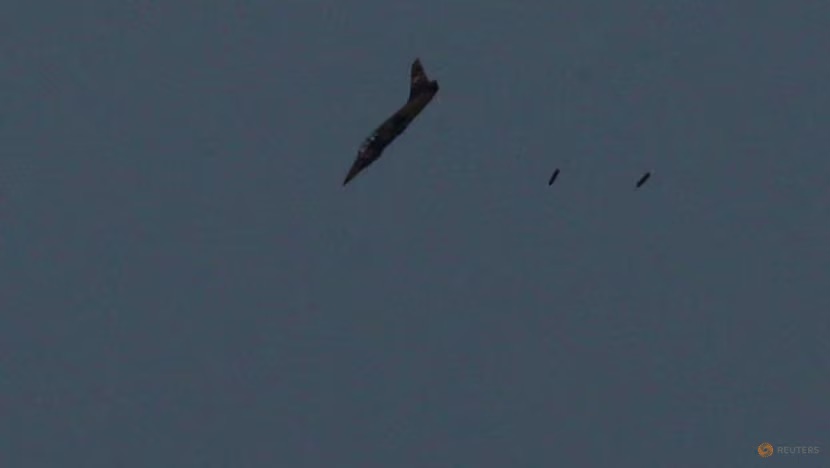BEIRUT, (Reuters) – Israel carried out its deadliest strikes in months on northern Syria’s Aleppo province today and said it killed a senior Hezbollah commander in Lebanon, stepping up its campaign against Iran’s proxies in parallel with its war in Gaza.
Israel has ramped up airstrikes in Syria against both the Lebanese Hezbollah militia and the Iranian Revolutionary Guard Corps (IRGC) since the Iranian-backed Palestinian faction Hamas’s attack on Israel on Oct. 7, and in recent days its pilots have resumed regular practice for “deep” raids into Lebanon.
Tehran and its proxies have entrenched themselves across Syria, including around Aleppo and the capital Damascus.
The Israeli military said today it had killed Ali Abed Akhsan Naim, deputy commander of Hezbollah’s rocket and missiles unit, in an airstrike in the area of Bazouriye in Lebanon.
It said he was one of the Iranian-backed militia’s leaders in heavy-warhead rocket fire and said he was responsible for conducting and planning attacks against Israeli civilians.
Israel and Hezbollah have also been trading fire across Lebanon’s southern border in the biggest escalation since they fought a month-long war in 2006, as Hezbollah has tried to show its support for Hamas with volleys of rockets into Israel.
About a dozen Israeli troops and half a dozen civilians have been killed in northern Israel, while nearly 270 Hezbollah fighters and 50 civilians including medics, civilians and journalists have been killed in Israeli strikes on southern Lebanon.
Israel has repeatedly struck international airports in both Damascus and Aleppo over the years to disrupt weapons flows to Iran’s allies in the region, but strikes since Oct. 7 have been deadlier and prompted Iran to withdraw some of its top officers from Syria.
Syria’s defence ministry said Israeli strikes hit several areas in the southeastern part of Aleppo province around 1:45 a.m. (2245 GMT on Thursday), killing a number of civilians and military personnel.
It said the airstrikes coincided with drone attacks carried out from Idlib and western rural Aleppo that the ministry described as having been conducted by “terrorist organisations” against civilians in Aleppo and its surroundings.
The Israeli military declined comment. In a post on X, Iranian foreign ministry spokesman Nasser Kanaani said Israel’s attacks on Syria were a “blatant and desperate attempt” to expand the war, without saying if there were Iranian casualties.
Three security sources told Reuters that 33 Syrians and five Hezbollah fighters had been killed in the strikes. One of the Hezbollah fighters was a local field commander whose brother had been killed in an Israeli strike on southern Lebanon in November, one of the sources said.
It represented the single highest death toll in Israeli strikes on Syria since Oct. 7.
ISRAEL-LEBANON BORDER FIGHTING
An Israeli strike on southern Lebanon on Friday killed a Hezbollah fighter, security sources in Lebanon said.
The head of the IRGC’s Quds Force, Esmail Qaani, met Hezbollah leader Sayyed Hassan Nasrallah in Beirut in February to discuss the risk if Israel were to launch a full offensive against Hezbollah, and received an assurance that the group did not want to drag Iran into war with Israel, sources have said.
Hezbollah has said it would stop firing into Israel if a ceasefire was reached in Gaza. Israeli and U.S. officials, however, have said a ceasefire in Gaza would not automatically extend to Lebanon.
Israeli Air Force (IAF) pilots have stepped up practising long-range strikes across the northern border as normal training activities have resumed in recent weeks after being suspended at the start of the Gaza war, the military said this week.
“The training program will focus on increasing the IAF’s readiness for war in the northern arena and in other arenas during prolonged combat,” it said in a statement.
The drills include rehearsing for “massive, long-range strikes, flying deep into enemy territory”, it added.









